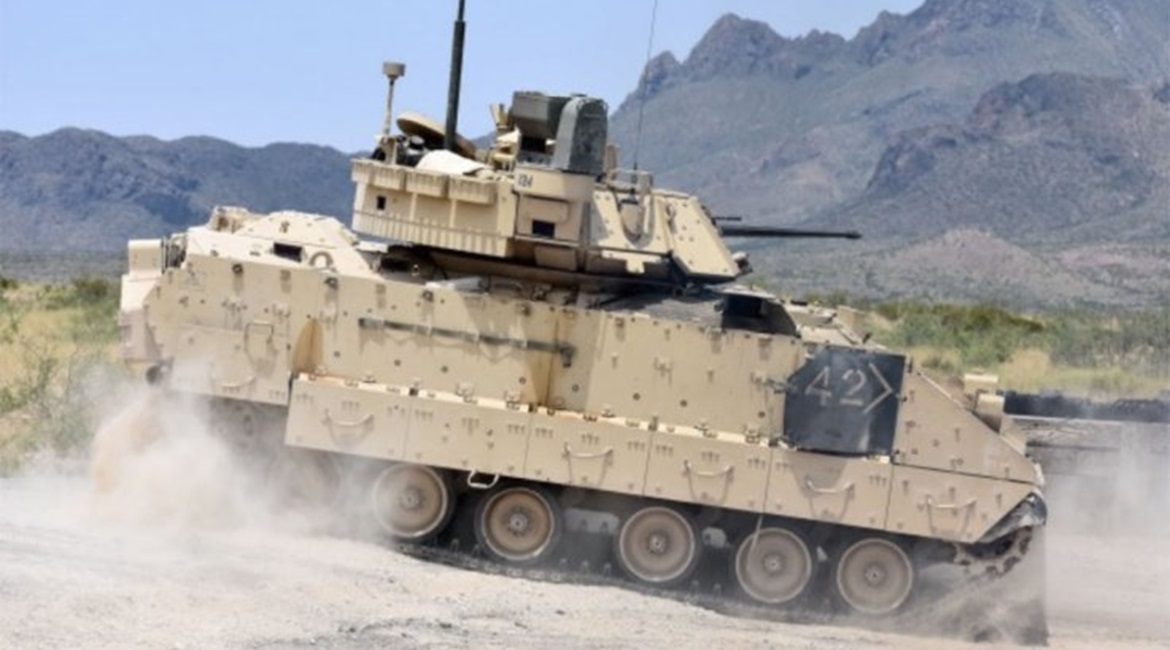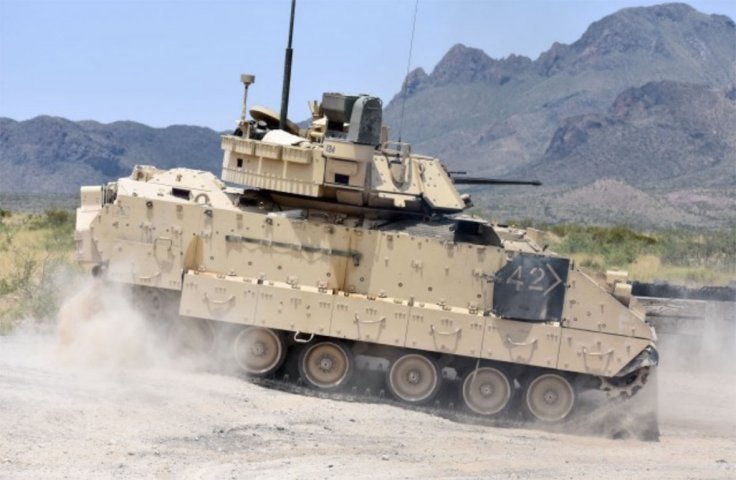
US Army officials are picking up the metaphorical pieces of their derailed Optionally Manned Fighting Vehicle (OMFV) prototyping competition and charting a new path forward. However, despite multiple attempts by industry to question the army’s OMFV requirements and aggressive timeline, top army personnel said they were caught off guard by companies’ inability to deliver on what they promised.
“It was a very risky timeline. We knew that going in,” US Army Chief of Staff General James McConville told an audience during a 21 January Association of the US Army (AUSA) breakfast. “The feedback we got [from industry] was that they could do it.”
Although the four-star general is not involved in the day-to-day acquisition process, other service leaders have also pinned part of the blame on industry overpromising and underdelivering.

A M2A3 Bradley Fighting Vehicle crew changes position on the range during a gunnery training event in 2018. The US Army is seeking to replace its Bradley fleet with the OMFV but is now going back to the drawing board on ways to do that. (US Army)
Bruce Jette, the army’s assistant secretary for acquisition, logistics, and technology (ASA[ALT]), for example, told reporters on 16 January that the service held approximately 11 OMFV industry days and solicited industry feedback during the draft request for proposal (RFP) phase. Despite this attempt, he conceded that the army’s final requirements “still could not align with what industry thought” and companies simply were not able to deliver what they said they could.
What is critical to note is that industry’s assertation that it could meet the army’s OMFV desires occurred before the service released its final requirements.
During a 23 January interview with Jane’s
Looking to read the full article?
Gain unlimited access to Janes news and more...






